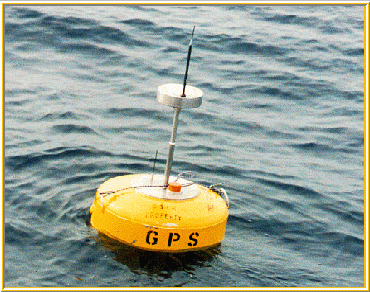|

The advent of the differential
global positioning system (DGPS) on-the-fly (OTF)
and post-processing software has meant that physical
positions can be determined with an accuracy of less
than a decimeter. Post-processing for wave analysis
is acceptable because data have to be captured over a
17-minute period before any analysis can take place.
With these aspects in mind, the
CSIR performed tests with a GPS carrier-phase receiver
mounted on a wave buoy that was swung on a dynamic
calibrator. Vertical movement of the buoy, as
recorded from GPS was plotted against the actual
sinusoidal locus of the buoy. The recorded positions
were very accurate and within 2 centimetres of the
actual path of the buoy.
The accuracy of the direction in
which the the buoy was swinging was excellent. When
compared to existing directional wave systems, which
are accurate to within 10 degrees of direction, the
GPS has a clear advantage.
Provided a reference station can
be established within 30 kilometres of the wave buoy,
the differential GPS with OTF software proves to be
excellent technology for the measurement of ocean
waves (including wave directions) and tidal changes.
|





